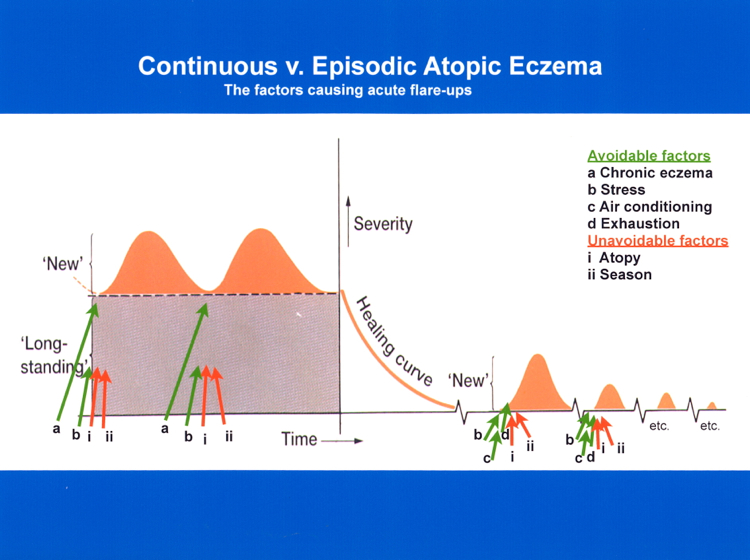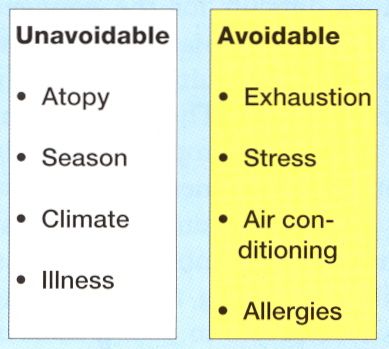Understanding acute atopic eczema

The diagram above shows the severity of atopic eczema (bottom to top) against time passing (left to right). Chronic or longstanding atopic eczema on the left is continuous atopic skin disease caused by habitual scratching. Acute or new atopic eczema comes and goes on top of it. This is the common state of affairs that The Combined Approach deals with. It achieves in the centre The Healing Curve: chronic or longstanding atopic eczema is eliminated. From then on if acute or new atopic eczema is recognized early and treated aggressively, each episode becomes less and less troublesome as time passes.

The second diagram illustrates how each episode of new atopic eczema is caused. Each flare-up is due to several trigger factors coming together: how it happens has been likened to a fruit machine - when three cherries line up, there is a result. No result with only two cherries. The good news is that with only acute atopic eczema (on the right), the number of factors needed for a flare-up can be more than is needed when chronic atopic eczema is present (on the left): chronic eczema itself is an important trigger factor causing acute eczema. The skin in chronic atopic eczema is relatively unstable and easily inflamed, much more easily than when the skin is not damaged by habitual scratching, as after The Combined Approach, on the right.

Each person with atopic eczema needs to know the trigger factors that can contribute to acute eczema flare-ups. Some are unavoidable: being atopic, or cold weather, for example. Others may be avoidable: exhaustion, or air conditioning for example. If this is understood, when several triggers occur at the same time an acute flare-up isn't a surprise - it can be predicted, and treated quickly, with the best results. Sometimes if avoidable triggers are avoided, the acute flare-up can be prevented - which is the best result of all, of course.
Do you know your triggers?
